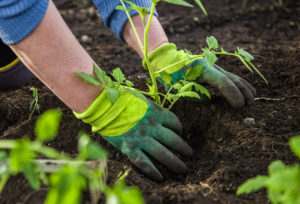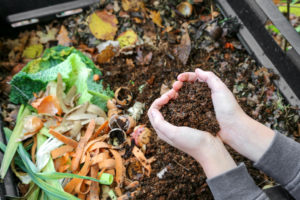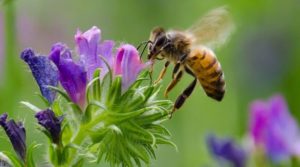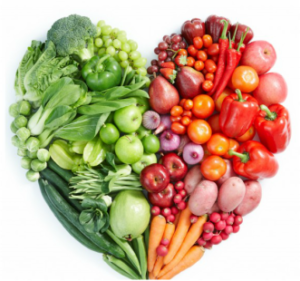Get the Dirt: Transition to Veganic from Organic Gardening
Posted in: Gardening, Vegan Living
Tags: Compassion, compost, vegan gardening, vegan living, veganics
Blood, bones, fish guts, milk powder, animal poop, and feathers. Yup, it’s ALL part of organic gardening. All of those animal ingredients and more get churned into the earth for reasons of soil balance, fertilizer, and disease prevention. But let’s be real, you don’t really want to embrace the chemicals, genetic modification, and the other scientific mysteries of conventional gardening or agriculture, either. So as a vegan, what is there do to?
Veganic gardening is about using plant matter to nourish plants. None of the nutrients that soil needs originate in animals; they all come from plants and in the wild, nature relies on plants to make soil fertile. Also known as “plant-based,” “stock-free,” “veganiculture” and “vegan-organic” farming, veganic growing is beneficial for the environment using highly sustainable methods to maintain soil and plants. Things like compost, seaweed, hay mulch, and alfalfa are key in veganics.
There’s no need in the growth cycle of plant life for slaughterhouse byproducts or synthetics. And just because “it’s always been that way” — i.e., using manure as fertilizer for example, doesn’t mean we have to go forward that way. By the way, manure from feedlot animals often carries intestinal and parasitic disease, as well as antibiotic and other drug residues. According to the World Health Organization, it’s already happened multiple times that animal manure applied to vegetables has transmitted E. coli O157:H7 to humans. There have been multiple outbreaks in recent years of tainted spinach or lettuce leading to sickness and death.

Maybe the way we’ve “always done things” is ready for an update. While veganic farms are still few and far between (though more and more open up all the time!), you can grow your own food, herbs, and flowers at home with no animal products involved.
First, I want to be CLEAR about this, just do your best. Going into veganic growing is a process and among gardeners and farms, this is a newish practice. And despite the non-vegan nature of organic growing, it’s environmentally preferable to conventional, chemical-laden growing. Now, if you have a limited budget, just do your best. In no way is this supposed to add an impossible task to your ethical vegan to-do list.
So, you have a garden and you want to transition to veganic. Great! Realize this is going to be a process. In fact, think back to when you went vegan. You may have gone from pescatarian to vegetarian to vegan. You may have worn out your leather belts and shoes before getting rid of them. There are lots of ways in which we honor the process of going vegan, balanced with who we were as individuals, and who we are becoming. Your garden is a living thing and needs this same honor and process. So, don’t get overwhelmed.
Let’s start with the dirt. To make plants grow, you need quality soil with a mix of calcium, nitrogen, phosphorous, potassium and trace minerals for balanced Ph. There are lots of ways to get there. There’s no need to do anything extreme to your garden, like striping all the top soil—begin wherever you are, even if you don’t know the history of your garden plot or if you used animal products/synthetic before. It’s okay. When we know better, we do better. Go forward from here as a veganic gardener.

My favorite way is compost. If you are able to compost where you live, your food waste from fruits and veggies, coffee grounds/tea bags, leaves, grass clippings and more. In summer, compost happens fast. Before you know it, nature will have created glorious, rich, dark compost for your garden. If you can’t compost where you live, bagged compost, often locally made, is usually available at hardware stores. A thick layer of compost, your soil mixed into the top few inches, is a wonderful place to begin.
Seaweed is like a miracle in gardens. You can use fresh, powdered/dry, or liquid infusion, but whichever way, try to get your hands on some seaweed fertilizer for your soil. It adds a unique blend of trace minerals. Commonly, you can find kelp meal or spirulina for garden use. Of all the garden amendments I have ever used, this is one of the most effective. A vegan brand is Kelp It Real.
There are commercial veganic fertilizer mixes on the market, like Down To Earth Vegan Mix 3-2-2, which is available in small, medium, and large quantities, depending on your garden size. There are also Walt’s and Incredible Bulk veganic commercial brands, and there are some mixes on Etsy from small makers. I’ve used Down To Earth with good results over several years for vegetables, herbs, and flowers.
Soil texture is an important factor. Unless you are only working in containers with bought dirt, figure out what you have to work with. Textures include clay/hard, loose, sandy, and loamy. Too much of any of these is a bad thing, so add amendments (like add some sand if you soil is hard-packed) to make the texture more amenable to your veganic garden.

All gardens need beneficial insects and you will need to make peace with the idea that at the VERY least you need pollinators and worms to make the magic happen. No matter what else you want to grow, be sure to plant flowers that will attract and feed pollinators. Bee balm, hyssop, aster, and coneflower are all options to consider, for bees. If you have a lot of worms already, that’s great! Lucky you! If you don’t, you can get a good population re-established by adding compost and mulch to improve your soil. Worms will dig that and move into your area.
All of these steps can be done at any time in the growing season. So, if you already have plants in the ground, that’s fine. Begin where you are! Want to wait a few months and start a fall garden? That works too, you have time! Veganic gardens need time, patience and tending, and as you transition from conventional or organic methods to compassionate, vegan practices, even your home-grown food, herbs and flowers will reflect your ethics.
At the end of the fall, you will need to winterize your garden. A fantastic step for the veganic gardener is to add a hearty layer of hay. It will slow down weed growth/spread, and keep the worms in your soil alive over the cooler months. The hay will break down and feed the soil in the spring.
Now you’ve got a good start on how to grow veganic. Keep working on the soil, learn all you can about your plants, and keep them happy! Before you know it, your kind, compassionate garden will be thriving.

ABOUT THE AUTHOR:
Rissa Miller is a vegan of 26 years, but has been gardening her entire life. There are photos of her as a toddler eating dirt under a raspberry bush. Clearly, she was always meant to be vegan. When not tending plants, Rissa is the Senior Editor of the Vegetarian Journal magazine, co-operates Baltimore Vegan Drinks, and is studying part time to be a clinical herbalist via The Herbal Academy and Chestnut School of Herbal Medicine. She is also a published author and poetess, and regionally-produced playwright, and loves long walks in the woods with her dog, The Dude.


Leave a Reply